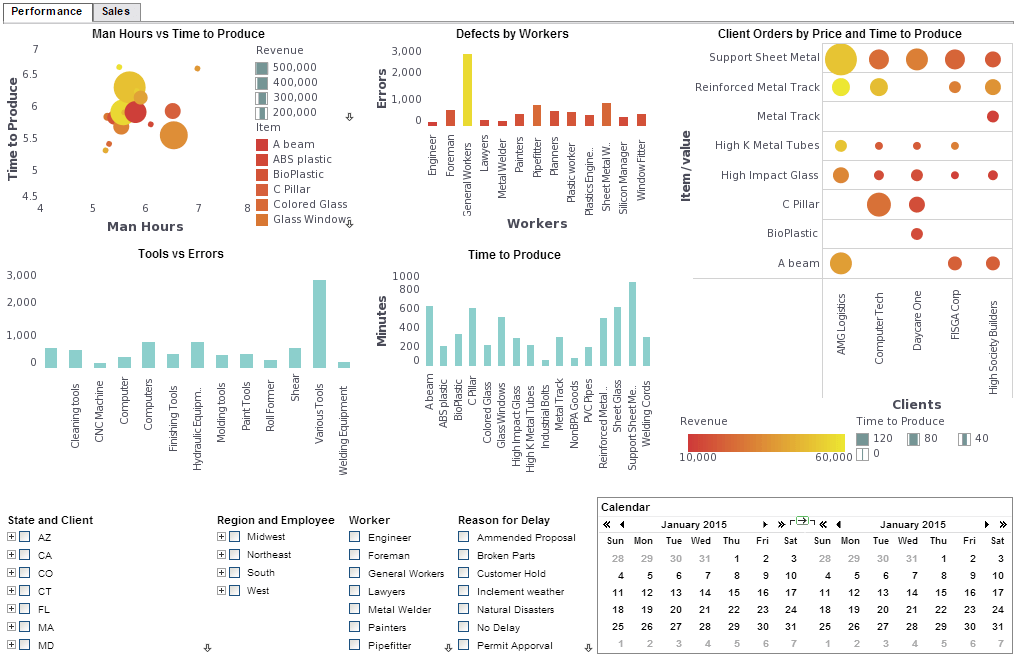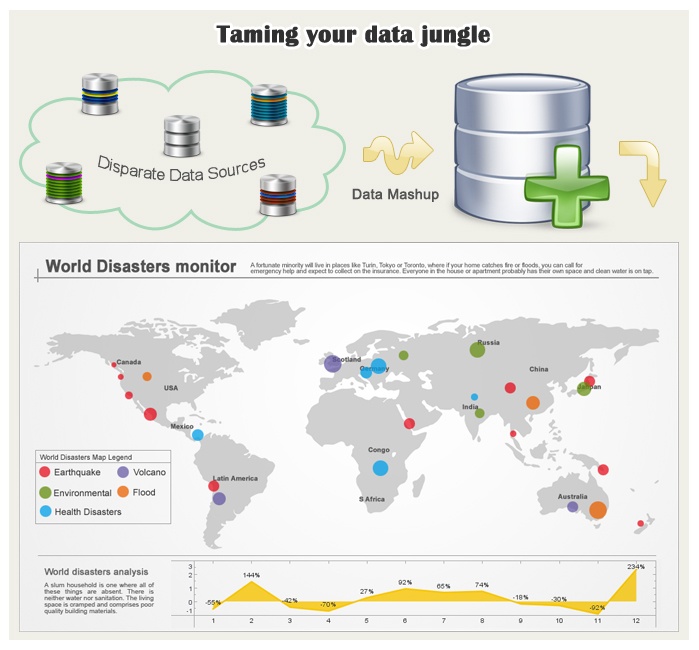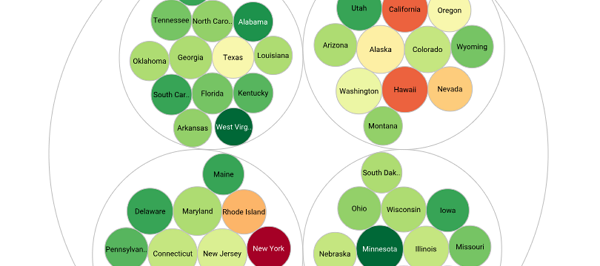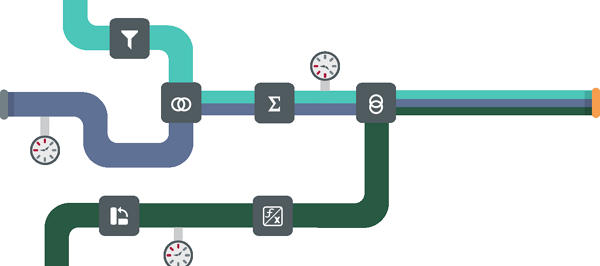InetSoft's BI Dashboard Solution for Progress DataDirect
With any business intelligence solution, it is important to have full access to all relevant data and information within a company. These data sets are stored in databases where dashboard reporting software can retrieve and compile information in order to build data visualizations and/or analytical reports.
InetSoft offers users flexibility through secure connections, such as Progress DataDirect.


Why InetSoft? Patent Pending Data Mashup Technology
InetSoft offers a business intelligence platform for dashboard and reporting that includes powerful enterprise data mashup capabilities.
With this advanced technology, StyleBI can collect disparate data sources of almost any type and merge them to produce more accurate reports and better quality dashboards. This can ultimately spark new insights and generate internal information management efficiencies.
Data Mashup Features include:
- mashups can be 'plugged in' to existing security infrastructure
- mashups can access data sources while conforming to native security mechanisms
- interactive dashboards and drillable reports can be rapidly built based on mashed up data
- connectivity to Relational databases (JDBC), Multidimensional databases, XML, SOAP, Java beans (POJO), EJB beans, flat files, and OLAP cubes
InetSoft's advanced Data Block technology provides users with a simpler way to connect to databases and present important information. A data block displays the data being queried from the database, while hiding the SQL query that is being run in the background, thus providing users with a simple and easy solution. Data Blocks display information business users would ultimately like to see, instead of just the underlying SQL declaration.
Data Access Features
- Access Multiple Data Sources - connect to relational databases, multi-dimensional databases, XML, SOAP, EJB, Java objects (POJO), flat files, etc.
- End-user Defined Data Mashup - combine data within a single data source or across multiple data sources into unified datasets using union, intersection, minus, inner/outer joins, etc.; simple drag-and-drop interface gives business users maximum self-service – a unique capability of StyleBI
- Reusability/Collaboration - reuse objects such as queries, worksheets, viewsheets, and report components for efficient team collaboration
- Virtual Private Model (VPM) - create virtual private models to limit data-level access by user, role, or group designation
- OLAP Overlay - create multi-dimensional hierarchies on top of a logical model
- ERwin Importer - import data models from ERwin
- MOLAP Cubes - supports Essbase, IBM DB2 OLAP Server, MS Analysis Service, and Oracle OLAP
5 Best BI Dashboard Solutions for Progress DataDirect
1. InetSoft Style-BI (InetSoft)
Why it's a standout: Explicitly designed—and even marketed—for seamless use with Progress DataDirect. It enables secure, drag-and-drop mashups of disparate data sources, virtual private models for data-level access control, and OLAP overlays through a user-friendly interface.
Pros:
- Built-in deep integration with Progress DataDirect
- End-user mashup capabilities enable lots of flexibility without complex modeling
- Strong collaboration (reusable queries, shared components)
Cons:
- As a specialized tool, enterprise adoption may be less common than mainstream BI platforms
- Reloading and governance can require upfront configuration to ensure dashboard consistency
Best for: Organizations already invested in DataDirect wanting powerful self-service mashups and security control.
2. Microsoft Power BI
Why a powerhouse: Offers solid ODBC and REST connectivity via DataDirect’s drivers and Autonomous REST connectors. Many supported sources even have DirectQuery capability, enabling real-time dashboards.
Pros:
- Ubiquitous adoption, rich community, and continuous feature growth
- Real-time refresh via DirectQuery for a wide range of sources
- Integration with Azure stack and strong governance tools
Cons:
- Managing ODBC-based refresh via gateways can be tricky—requires proper setup and maintenance
- A steeper learning curve for non-technical users compared to simpler dashboards
Best for: Enterprises with hybrid/real-time data needs and existing Microsoft investments.
3. Tableau
Why a core player: Tableau is one of the “80% leading BI vendors” that DataDirect explicitly supports via ODBC/JDBC connectivity.
Pros:
- Highly intuitive visual analysis and storytelling tools
- Strong ODBC driver support via DataDirect ensures connectivity to virtually any source
- Extensive community resources and third-party visualization extensions
Cons:
- Cost can be higher, especially at scale
- Some enterprise features require additional licensing
Best for: Analysts craving flexibility, visual creativity, and exploration across data connected via DataDirect.
4. Sisense
Why it stands out: Known for embedding BI and handling very large datasets. It connects via JDBC (and therefore via DataDirect JDBC drivers too).
Pros:
- Excellent performance and in-engine processing for large data
- Highly customizable dashboards using JavaScript widgets
- Embeddable analytics for apps or portals
Cons:
- Setup and maintenance can be resource-intensive
- Licensing costs can be high for small teams
Best for: Data-heavy enterprises needing embedded, high-performance dashboards with DataDirect backend connectivity.
5. Open-Source BI Options (Apache Superset, Metabase)
Why it matters: Open-source BI tools often support generic SQL datasources, making them compatible with DataDirect’s ODBC/JDBC connectors. Apache Superset offers extensible, enterprise-ready visualization; Metabase is ultra beginner-friendly, offering dashboards with minimal setup.
Pros:
- Cost-effective (free or low-cost licensing)
- Flexible, moddable, great for startups or internal tools
Cons:
- Lacks advanced governance, support, or polished experience of commercial products
- May require more hands-on setup for DataDirect connectivity
Best for: Teams with technical capability or limited budgets looking to quickly connect to DataDirect data sources.
Summary Table
| Solution | Integration with DataDirect | Pros | Cons |
|---|---|---|---|
| InetSoft Style-BI | Native support & Data Mashup features | Mashup, security, reusability | Less mainstream, may require dedicated deployment |
| Microsoft Power BI | Strong ODBC/REST support + DirectQuery | Real-time, familiar, broad ecosystem | Gateway setup complexity, steeper learning curve |
| Tableau | Fully supported via ODBC/JDBC | Visual exploration, powerful analytics | Higher cost, enterprise features on extra licenses |
| Sisense | JDBC connectivity via DataDirect | Performance, embeds, large data support | Expensive, heavy resource requirements |
| Apache Superset / Metabase | Generic SQL compatibility | Affordable, modular, easy to start | Less enterprise support, DIY setup required |
If your core priority is seamless integration with Progress DataDirect, InetSoft Style-BI is an excellent, often underrated choice—especially when mashup capabilities and access control matter most. For mainstream adoption, Power BI and Tableau are top-tier—just remember the effort needed to configure gateway and drivers properly. If load performance and embedding dashboards into existing applications are critical, Sisense is very compelling—though it comes with server and cost implications. No budget or want total control? Go open-source with Superset or Metabase. Yes, they may require technical setup for DataDirect connectivity—but they’re flexible and can serve as experimentation platforms or internal dashboards.

